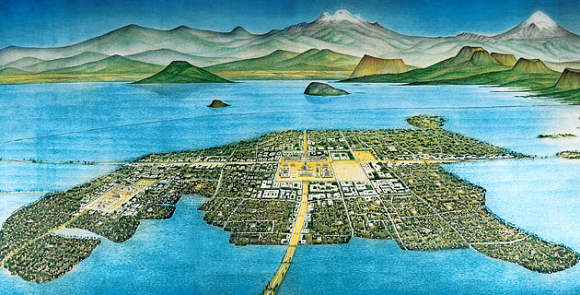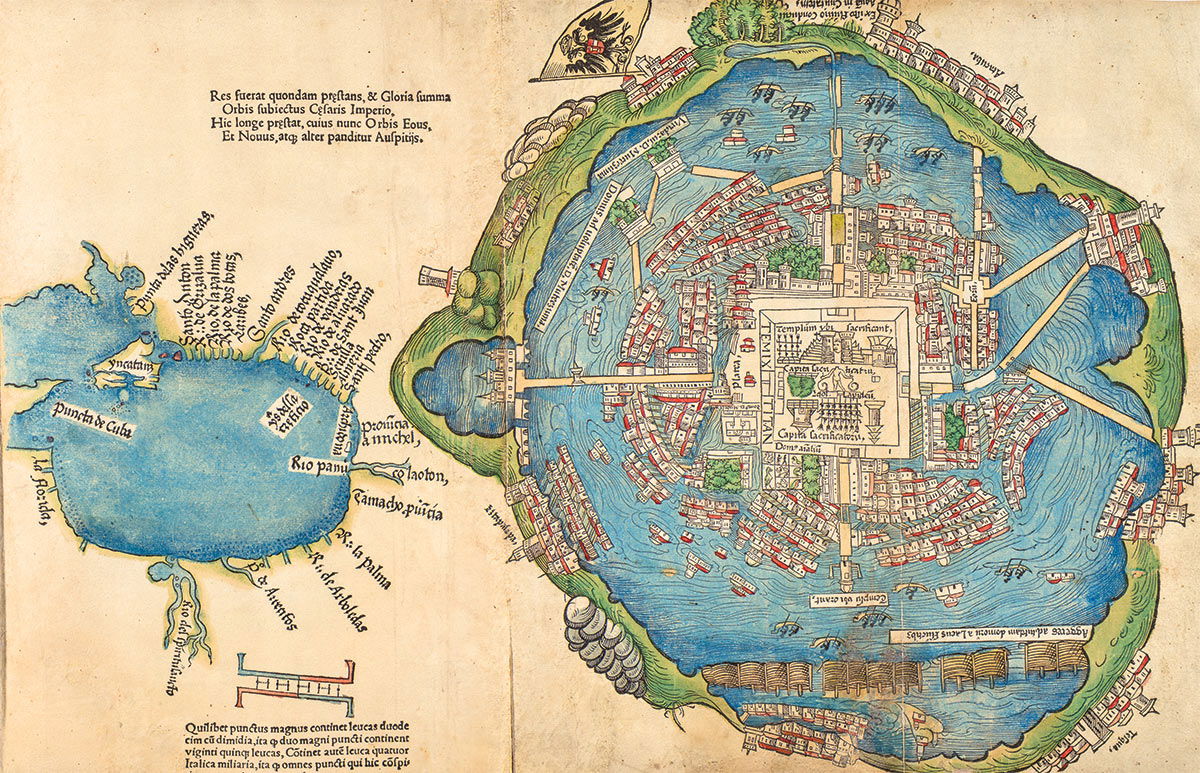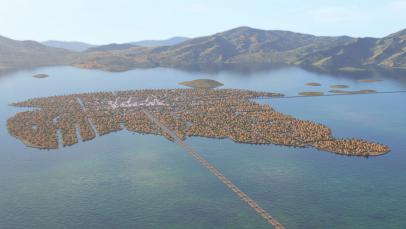Latin America
Related: About this forumNew evidence points to a clash between two ancient Mesoamerican cultures, Teotihuacan and the Maya.
THE ARRIVAL OF STRANGERS
27 FEB 2020 BY LIZZIE WADE
SAN JUAN TEOTIHUACAN, MEXICO—On 16 January 378 C.E., a stranger arrived in Tikal, a large Maya city in what is now northern Guatemala. His name was Sihyaj K'ahk' (SEE-yah Kak), or Fire is Born, and he was likely a mighty warrior from a distant land. Many archaeologists think he hailed from Teotihuacan, a metropolis of 100,000 people about 1000 kilometers northwest of Tikal, near today's Mexico City. And he may have come with an army.
The stone Maya monuments that record Sihyaj K'ahk's arrival don't say why he came or how he was received by Chak Tok Ich'aak, or Jaguar Paw, the long-reigning king of Tikal. But the day Sihyaj K'ahk' marched into the city was the day Jaguar Paw died.
The engravings suggest Sihyaj K'ahk' had been sent by a powerful foreign ruler called Spearthrower Owl. Within 2 years, Spearthrower Owl's young son was crowned the new king of Tikal. In portraits carved on stone monuments there, the new king, named Yax Nuun Ayiin, holds an atlatl, a spearthrower used by Teotihuacan warriors, and wears a Teotihuacan-style headdress adorned with tassels. Some images of him and his father on monuments at Tikal are even carved in the flat, geometric style of Teotihuacan art, distinct from the intricate, naturalistic portraits of the Maya. Under the exotic new king and his descendants, Tikal became one of the most powerful cities in the Maya region.
Archaeologists have known the outline of those events for decades, but have long debated their meaning. Now, new evidence from both Teotihuacan and the Maya region has brought the relationship between those two great cultures back into the spotlight—and hints it may have been more contentious than most researchers had thought.
More:
https://www.science.org/content/article/astounding-new-finds-suggest-ancient-empire-may-be-hiding-plain-sight
Also posted in Anthropology:
https://www.democraticunderground.com/12297429
abqtommy
(14,118 posts)378 C.E. or A.D. and the short answer is that the Aztec were relative latecomers. The
Aztecs came into power as a group around 1,300 C.E. or A.D., long after Teotihuacan
was abandoned but while the Teotihuacan-influenced Mayan Empire still existed.
I've probably searched this out before but here's a few links:
http://www.aztec-history.com/teotihuacan.html
https://www.linkedin.com/pulse/mayan-aztec-empires-dr-patrick-j-treacy
note: At the second link the Aztec information is a long scroll down. And of course we
people with an interest in these topics are seldom causing trouble elsewhere!
Judi Lynn
(160,515 posts)That would be some kind of trek. Haven't taken the time to follow up on that one.
In your first link it's mentioned the time frame on Teotihuacan has been pushed back prior to the Toltecs by now. Fascinating to read that.
The dates of the Maya, maybe in the second link are wonderful! The photos available in the article highlight the actual beauty and skill of their stone carving, which is astonishing.
Click for image:
https://media-exp1.licdn.com/dms/image/C5112AQFyVr1gtNWBKw/article-inline_image-shrink_1000_1488/0/1520170794527?e=1637193600&v=beta&t=LqscsdXYLa06-I9ZTPs-1cXGnggjcXOYfga4VR_kzRI
Unbelievable!
The video was great, in link #2.
Thank you for sharing this useful information. Much appreciated.
abqtommy
(14,118 posts)south into what is now Mexico but I don't have any links to that information. Yet. ![]()
Judi Lynn
(160,515 posts)The rise of the Aztecs
The word Azteca is derived from Aztlán (variously translated as “White Land,” “Land of White Herons,” or “Place of Herons”), where, according to Aztec tradition, their people originated, somewhere in the northwestern region of Mexico. The Aztecs are also known as Mexica or Tenochca. Tenoch, or Tenochca, was a legendary patriarch who gave his name to Tenochtitlán, the city founded by the Aztecs on an island in Lake Texcoco, in the Valley of Mexico. The name Mexica came to be applied not only to the ancient city of Tenochtitlán but also to the modern Mexican country and its inhabitants (Mexico, Mexicans).
The language of the Aztecs was Nahuatl (Nahua), part of the Uto-Aztecan linguistic family that, at the time of the early explorations of America by Europeans, was influencing languages as far north as the Yellowstone River and as far south as Panama. Once the Aztecs achieved political ascendancy, Nahuatl became the lingua franca of an area almost as large as present-day Mexico.
The empire the Aztecs established was equaled in the New World only by that of the Incas of Peru, and the brilliance of their civilization is comparable to that of other great ancient cultures of America and the Old World. From their legendary land of Aztlán, the Aztecs came into contact with the highly developed Toltec civilization of central Mexico and its capital, Tula, a magnificent urban centre with pyramids, temples, public buildings, statuary, private residences, and ball courts. The appearance of the Aztecs is linked, however, not to the splendour of Tula and of the Toltec but to their decline. For reasons not fully known but having to do with internal social, political, and religious conflicts, a tremendous cultural catastrophe occurred at the beginning of the 12th century CE. The city of Tula was attacked and destroyed, as were other important Toltec centres. Tribes of hunters and gatherers took advantage of the situation and added to the chaos, traveling from the arid plateau of northern Mexico toward the fertile, heavily settled central zone. Among them were the Acolhua in the 1100s and, in the 1200s, the Chichimecs, who settled at Tenayuca; the Otomí, who took control of Xaltocan; the Tepanecs, who conquered Atzcapotzalco; and the Aztecs. Except for the Otomí, all were Nahuatl speakers.
More:
https://www.britannica.com/place/Mexico/The-rise-of-the-Aztecs
Found a map of US rivers, saw the Yellowstone river starts farther North than
I would have guessed:
Clearly there's a whole lot of searching ahead before finding anything more definitive! Saw several claims they came from the US Southwest. Looks like it will be necessary to keep on searching. There are actually so many scholars who have studied the linguistic origins, too, you can get overwhelmed. I have wondered about the "atl" ending of so many North American words, since "atl" is enormous in "Nahuatl" words. So many common words, I saw tonight, are of Nahuatl origin. Yikes.
Anytime a representation appears of the island capital, it's amazing. The created a causeway from the island to connect it to the shore, an impressive creation:

https://geo-mexico.com/?p=1657
~ ~ ~
The Map: Tenochtitlan, 1524
Kate Wiles provides context for the first European image of the Aztec capital, razed by the Spanish in 1521.
Kate Wiles | Published in History Today Volume 66 Issue 10 October 2016

https://www.historytoday.com/archive/cartography/map-tenochtitlan-1524
~ ~ ~
Windfall Films Ltd
Aztec Secrets Unearthed in New Science Channel Special
By: Nesa Nourmohammadi
LOST PYRAMIDS OF THE AZTECS highlights rarely seen archeological sites, as experts conduct excavations and attempt to build an Aztec pyramid. The special premieres Sunday, June 28 at 8P ET on Science Channel.
June 26, 2020

https://www.discovery.com/exploration/aztec-secrets-unearthed-in-new-science-channel-special
ETC., ETC.
Zorro
(15,733 posts)One of the videos focuses on the Mayans. Highly recommended.
https://www.youtube.com/c/FallofCivilizationsPodcast